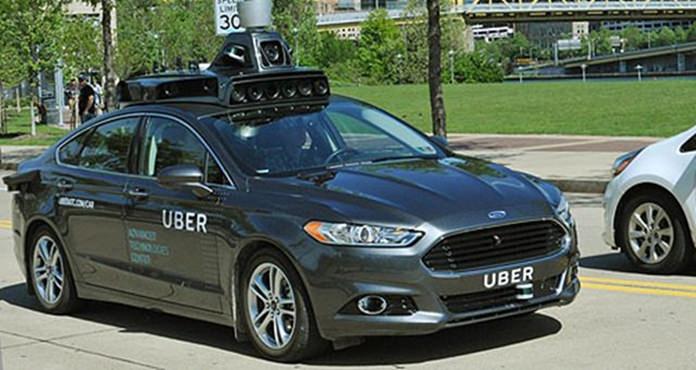The US city of Pittsburgh, Pennsylvania, has been selected for trials of Uber’s self-driving Ford Fusion Hybrid prototype.
Uber has indicated its intention to help accelerate the adoption of autonomous vehicles by revealing details of its own self-driving prototype, based on a Ford Fusion (Mondeo).

Uber is becoming increasingly active in the autonomous vehicle technology, having last month joined with Ford, Volvo, Google and fellow ride-sharing service Lyft to form a lobby group called ‘The Self-Driving Coalition for Safer Streets’. Very noble of them if we can keep local drivers off the streets here!
There is a rumored purchase by Uber of 100,000 autonomous S-Class limousines – before a production version of the German brand’s flagship model has been launched or even announced with such capability.
Compared with its current outsourcing of vehicles – and therefore business risk – to owner-drivers, Uber’s apparent shift to owning and even developing cars appears to be at odds with its own business model.
However, looked at a different way, Uber’s greatest cost is the human drivers and a portion of what it pays them goes toward the driver’s vehicle running costs, so by cutting out the driver Uber potentially stands to profit from autonomous technology.
An alternative view is that Uber could be developing autonomous technology to package up and sell to owners of compatible vehicles as a plug-in item, enabling the owner to earn money from their car through Uber when they are not using it and simply summoning it back to base when it is needed.
The official Uber company line is that autonomous vehicles will lead to “less congestion, more affordable and accessible transportation, and far fewer lives lost in car accidents”.
Like most production-car-based autonomous prototypes, the Uber car has a variety of externally mounted equipment including radars, laser scanners and cameras enabling it to map its environment, follow a pre-programmed route and respond to hazards.
Also like other autonomous vehicle prototypes, a human driver remains at the wheel to monitor the on-board systems and take emergency action if required.
“While Uber is still in the early days of our self-driving efforts, every day of testing leads to improvements,” the company said.
“Right now we’re focused on getting the technology right and ensuring it’s safe for everyone on the road – pedestrians, cyclists and other drivers.”




